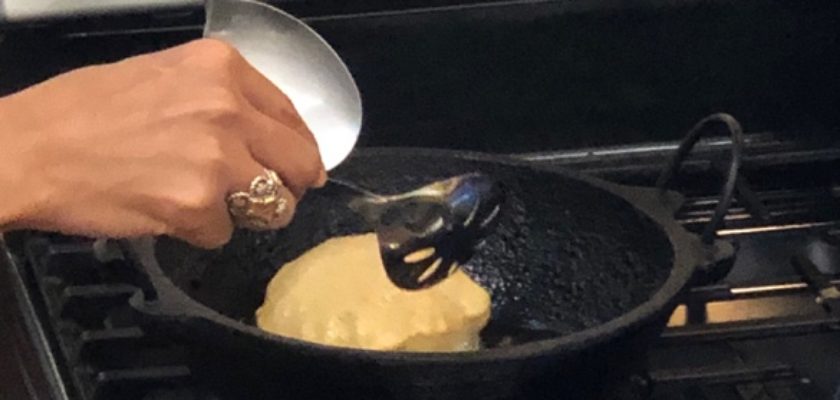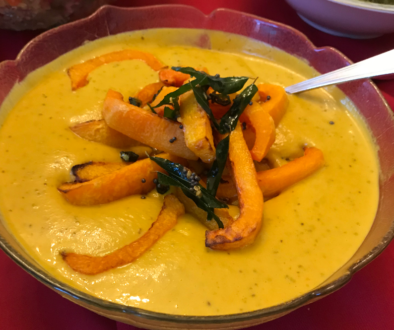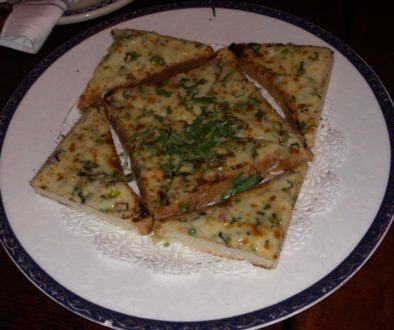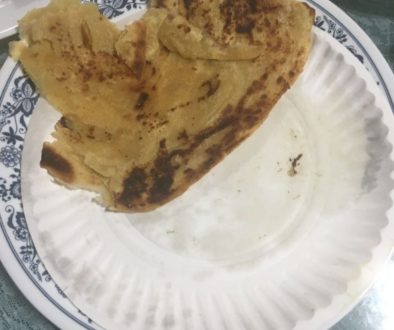Breaking Bread
By Madison Miura

In 2020, I began teaching an Indian food, blogging and photography class at Willliams College, Massachusetts. At each session, students prepared a protein, lentil, vegetable, and bread or rice dish. We concluded the class by sitting around a table, talking and eating all the delicious food prepared.
The class included a Jackson Heights restaurant tour and we observed two chef’s – from Drunken Munkey and Rahi – demonstrate their cooking skills. Below are some of my student’s blog posts.
Throughout the course of the past four weeks, I have written about dosa, chapati, and chili cheese toast. For the final iteration in my bread-themed blog, I focus on the process of making puri. Soft and airy, light and delicious — from eating a puri, no one would ever be able to tell that it was in fact deep fried in oil. I certainly never knew that puris were deep fried until we made them in class.
Much to my surprise, preparing puri dough is almost identical to chapati dough, with some minor modifications. After adding a pinch of salt to the atta, less water is used for puri dough, making a stiffer texture than chapati dough. Additionally, we added a tablespoon of Greek yogurt to the puri mixture, an element that is absent from chapati recipes. After kneading and resting the dough, we rolled it out into small tortilla-like disks. Again, this process was nearly identical to that for chapati, however the puri disks had to be smaller than the chapatis so they could be fully submerged in oil when we cooked them.

When the peanut oil was hot enough in the cast iron deep fryer, tested by sticking a piece of dough in the oil to see if bubbles formed around it, we slid a puri disk into the oil. We all watched in anticipation as the flat dough was prodded with the edge of a metal slotted spoon until it began to fill with air, rise to the top of the oil, and transform into a puffy balloon of a bread. “You have to tease it!” Professor Reddy called out to us as we each tried our amateur hands at the task. Careful not to overcook the bread, we flipped it over in the oil until both sides were golden brown. Finally, the slotted spoon was used to hover the finished puri at the edge of the deep-fryer and drain the oil. Although puri and chapati are extremely similar in terms of their ingredients, the breads turn out completely different as a result of the cooking techniques used. Because of their playful appearance and airy texture, I preferred puri to chapati (I just had to overlook the fact that we had to drench the puris in oil to make them). When paired with the spiced potatoes, especially, puris are to die for.


Being the daughter of a professional baker, I have always been drawn to the process of bread-making, however, most breads I have encountered in the past are baked in the oven. In this Indian cuisine class, I was introduced to a whole new world of stove-top breads and I am extremely excited to bring my newly acquired skills of dosa flipping, chapati kneading, and puri frying into my own kitchen. At the end of this four-week course, I feel fortunate not only to have been given the chance to learn about Indian cuisine, but also to break bread with people I had never met while enjoying food I had never tried.
Madison Miura is a senior at Williams College where she is double majoring in biology and sociology. She has been dancing (ballet, jazz, and hip-hop) since she was four years old and is now the President of her student-led hip-hop group. When she is not studying or dancing, Madison enjoys experimenting in the kitchen and crisis counseling via SMS text for Crisis Text Line.







